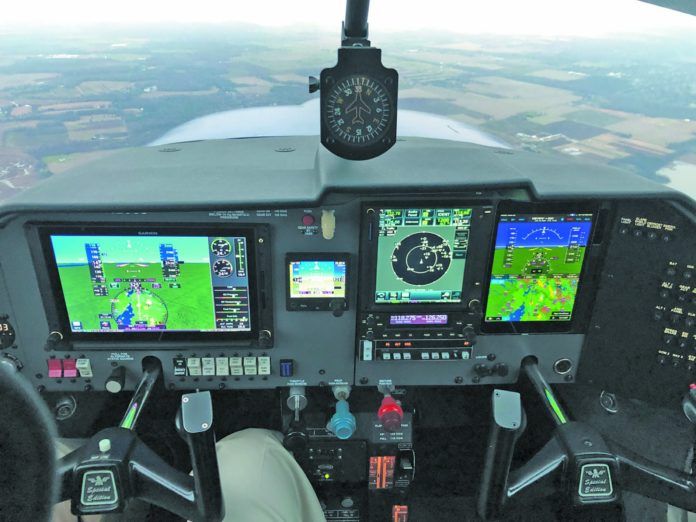ADS-B is old news. Let’s equip and move on because the real news in the avionics market is the serious surge in competition, combined with a shift from expensive TSO approvals to STCs. That’s working out to the benefit of avionics buyers, especially ones with lower budgets.
Adding to the competition are newcomers, with New Mexico-based Aerovonics as one example. As we reported in the July 2019 Aviation Consumer, this new company’s AV-series primary EFIS is capable and smartly engineered, with a price that caters to low budgets and an installation that doesn’t require shredding the instrument panel.
Of course the dense market doesn’t make an already difficult buying decision any easier. So to help sort it out, in this article we’ll offer an around-the-bases look at the most popular new avionics configurations-from entry-level (for basic aircraft) to higher-budget (for go-places higher-end machines). The idea is to arm you with enough knowledge to talk the talk with your avionics shop when they make suggestions for a package. It’s also time for our ADS-B buyer’s guide, and it follows this article. Let’s begin with an ADS-B wrap-up.
Don’t Overthink It
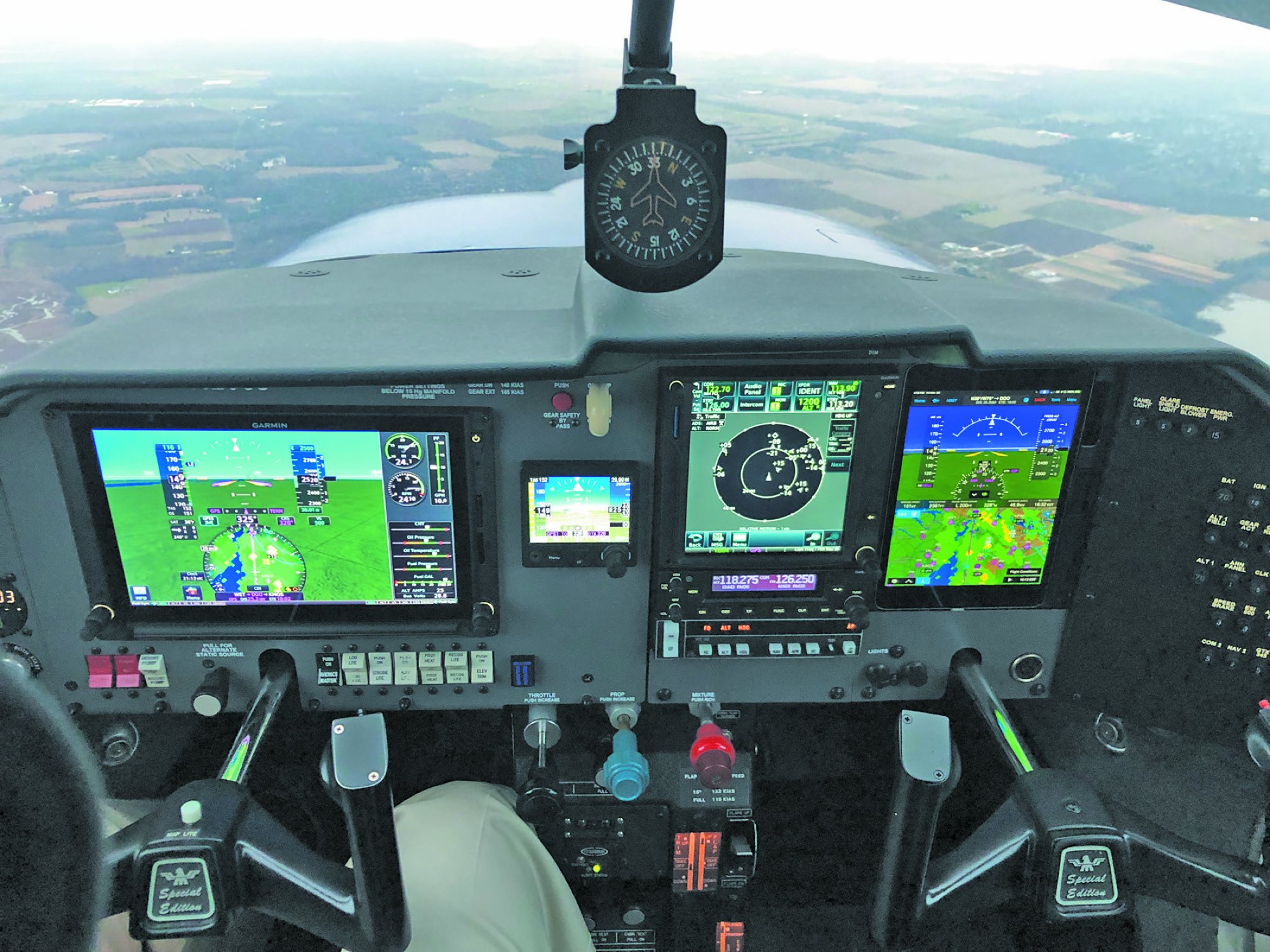
At this point the ADS-B buy-in decision should be easy. You’ve heard it all before but we’ll tell it to you again: If you fly above 18,000 feet, you’ll need an ADS-B transponder. And if your existing transponder is an aging non-digital (has a cavity oscillator tube) model, our advice is to ditch it and put in an ADS-B transponder. Old models worth getting rid of include the King KT76/78 series and anything made by Narco or Collins. If there’s any doubt about its health, have your shop evaluate it. You’ll need a reliable unit for the long term.
If you’ve already invested in a modern transponder upgrade and don’t fly above 18,000 feet, one top pick is the uAvionix skyBeacon wingtip unit with LED position and strobe lamps. We’ve covered this system extensively, and most recently in the May 2019 Aviation Consumer where we installed one in a Piper Cherokee to see if it really was the world’s easiest ADS-B upgrade as the company claims.
Turns out the claim was close enough to crown the skyBeacon a winner for a budget-based solution, the deal sweetened with a two-for LED lighting upgrade. Realistically, you’ll want to budget $2000 for an easy installation (including the strobe light), paperwork and flight testing, and a bit more if the light doesn’t exactly bolt directly in place of the existing lamp assembly.
If you already have a healthy and modern transponder and you don’t plan to fly high, Garmin’s GDL82 UAT solution sells for $1795-the second cheapest. The datalink processor connects in line with the existing transponder antenna and has a built-in WAAS GPS. The installation requires mounting the GPS antenna on the cabin and wiring the unit.
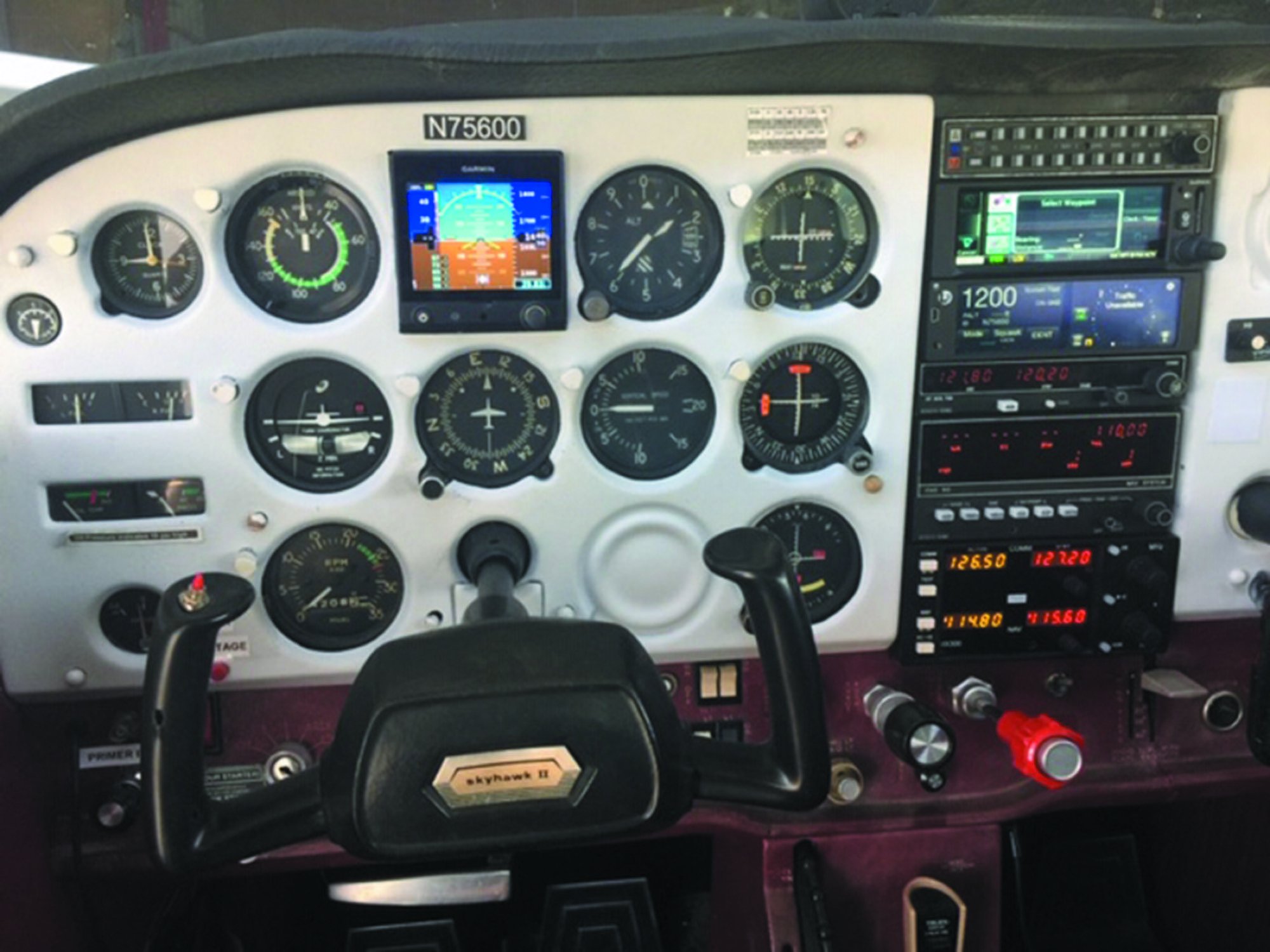
But as budget-based as these solutions are, shops still report that the most popular ADS-B upgrade is Garmin’s GTX345 ADS-B In and Out transponder. It’s available with and without WAAS GPS and has built-in Bluetooth for sending flight data, ADS-B traffic and weather data to a tablet or smartphone running the Garmin Pilot or ForeFlight tablet apps. It’s a generous interface. Pricing on the base GTX345 (without GPS) is $4995. Got an existing GTX330 Mode S unit? Garmin will upgrade it to the GTX330ES, which has ADS-B Out, but requires a WAAS GPS input.
Top Efis Upgrades
Of all the avionics upgrades, planning a primary flight display retrofit is perhaps the most difficult. There could be major panel work involved, and it might not work fully with your autopilot.

Step one is to evaluate the existing flight instruments and look toward the future. If the aircraft has traditional round gauges, do you want to get rid of the vacuum system in favor of an all-electric suite? If so, does the product’s STC include removing the vacuum system? There’s good reason to consider going vac-less. Other than the obvious boost in confidence and reliability, getting rid of all that hardware sheds sizable weight and clutter behind the instrument panel.
Your Garmin dealer’s most likely top recommendation for a lower-end EFIS upgrade might be Garmin’s $2249 G5 display, of which there are two. It’s a worthy suggestion, in our view. The G5 has an STC that currently covers 560 aircraft models-a huge swath. In its basic form, a single G5 attitude indicator can be installed as primary. It has a battery backup in case of electrical failure and can be paired with the $2549 G5 heading/electronic HSI instrument for dual ADAHRS redundancy. If the G5 attitude instrument fails, the directional instrument reverts to an attitude display.
Connecting the G5 directional instrument to third-party autopilots and earlier GPS navigators requires the $699 GAD29B nav interface module. Once the dust settles, typical dual-screen G5 installations generally run around $7000.
On the higher end, Garmin has a widespread STC for the once experimental G3X Touch. We covered the G3X Touch in a flight trial article in the June 2019 Aviation Consumer so we’ll just recap it here. When planning the G3X Touch, first consider which screen configuration works best for the panel and the budget. What makes this system our top pick for a high-end EFIS is the number of display options and the 500-plus approved model STC.
It’s worth mentioning Garmin’s G500/600TXi PFD/MFD, which came out before the G3X Touch was certified. Unlike the G3X Touch, the TXi displays have full TSO approval, plus the system is deeply compatible with analog third-party systems, including legacy autopilots. Contrast that with the G3X Touch, which essentially requires a Garmin navigator for its digital data bus interface. With the TXi, you can interface your analog KX155 nav radio, as one example.

When deciding on either system, ask your shop what makes the most sense from a compatibility standpoint. The TXi is also available with Garmin’s EIS engine indication system and is available in multiple screen configurations.
There’s roughly a $6000 greater price delta between the 10-inch G500TXi ($15,995) and the 10-inch G3X Touch. The basic, bare-bones G3X Touch with a 7-inch screen is $7995.
If you already invested in Aspen’s Evolution retrofit EFIS, you probably recognize that the system can use a jumpstart in processing speed and graphics display. That’s just what Aspen offers with the Evolution MAX displays. The MAX, which is available in one-, two- and three-screen versions (just like the original Evolution), is designed as a drop-in replacement for the older displays. But if you want to connect the new display’s audio output feature, your shop will need to wire it in to the audio panel. We think the effort and cost is worth it given the added utility, including “minimum” callouts when on an approach.
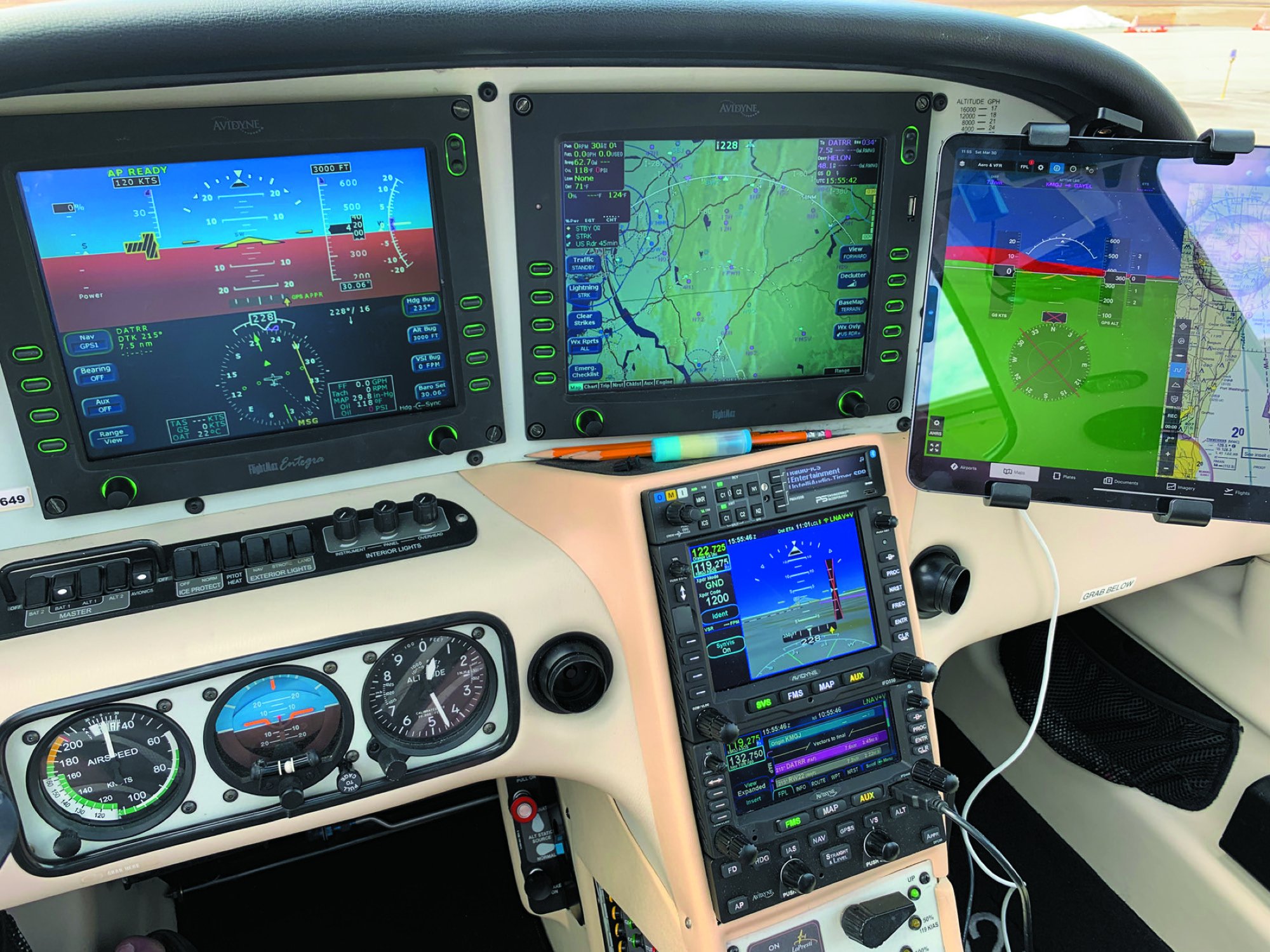
After flying the new MAX system in a Cirrus (splashed with bright Florida sun), we think the new display technology is impressive-perhaps one of the most sunlight-readable PFDs on the market. Better yet, the Max gives existing Aspen owners an upgrade path, plus it runs upgrade promotions (currently $4995) and can upgrade your existing display or send your shop an exchange. All upgrades get a fresh two-year warranty.
Avidyne’s Ars: Gps with Attitude
For belt-and-suspender backup that’s self-contained in the radio stack, we think Avidyne’s IFD550 navigator is a worth a look, especially if you’re looking to step up and out of an aging Garmin GNS530. The 550 is a follow-on product to the IFD540 (and smaller IFD440) and these are drop-in replacements for Garmin GNS530W navigators. This means in those applications there is limited rewiring required.
At first glance the Avidyne IFD navigator product line may seem confusing, but it doesn’t have to be. What differentiates the IFD550 from the IFD540 is the IFD550’s ARS, or attitude reference system.
Other than accepting a heading input from Aspen’s Evolution PFD, in addition to Garmin’s G500/600 PFD, the Avidyne ARS is self-contained. The navigator also sends GPS nav and course data into the displays over an ARINC 429 data stream. For dual installations (maybe an IFD550 and IFD440), the connections are independent for redundancy, but have full synchronization.
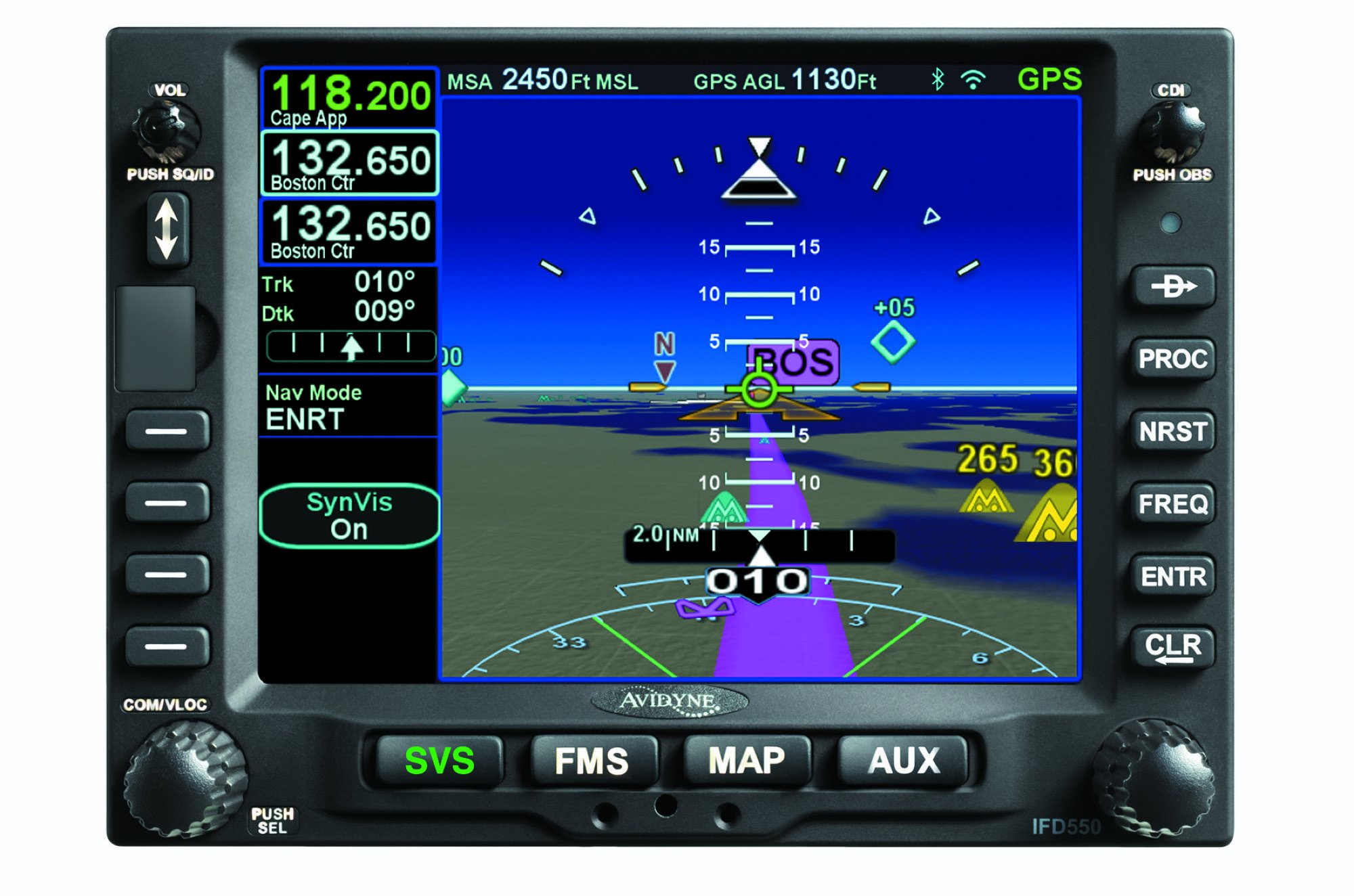
Avidyne was the first with a hybrid user interface, which means you use a combination of touch and button presses. There’s also an extensive wireless (Bluetooth and Wi-Fi) interface for connecting the IFD to external devices, including an iPad running Avidyne’s IFD100 app, in addition to ForeFlight. In fact, the IFD100 app essentially adds a second IFD550 display/control set on the tablet. The navigator also connects to a Bluetooth keyboard as yet another option for data entry.
The list price of the IFD550 is $21,999, but if you have a clean and fully functional Garmin GNS530W, you can cut that cost substantially. We’ve see trade values as high as $8000.
Engine Monitors
We’re putting the finishing touches on an engine monitor roundup for a future issue of Aviation Consumer, but we’ll give you a brief primer here. We’ll start by saying that primary monitors (ones that are approved to replace all of the OEM gauges-including fuel quantity) require a sizable installation. Given their size, expect your shop to do substantial panel rework to make the big-screen display fit in a location that’s within your scan and reach. If you have aging fuel senders, expect to either have them overhauled or in many cases replaced with digital senders that may prove far more accurate than older analog senders. This adds big to the installation effort and bottom line.
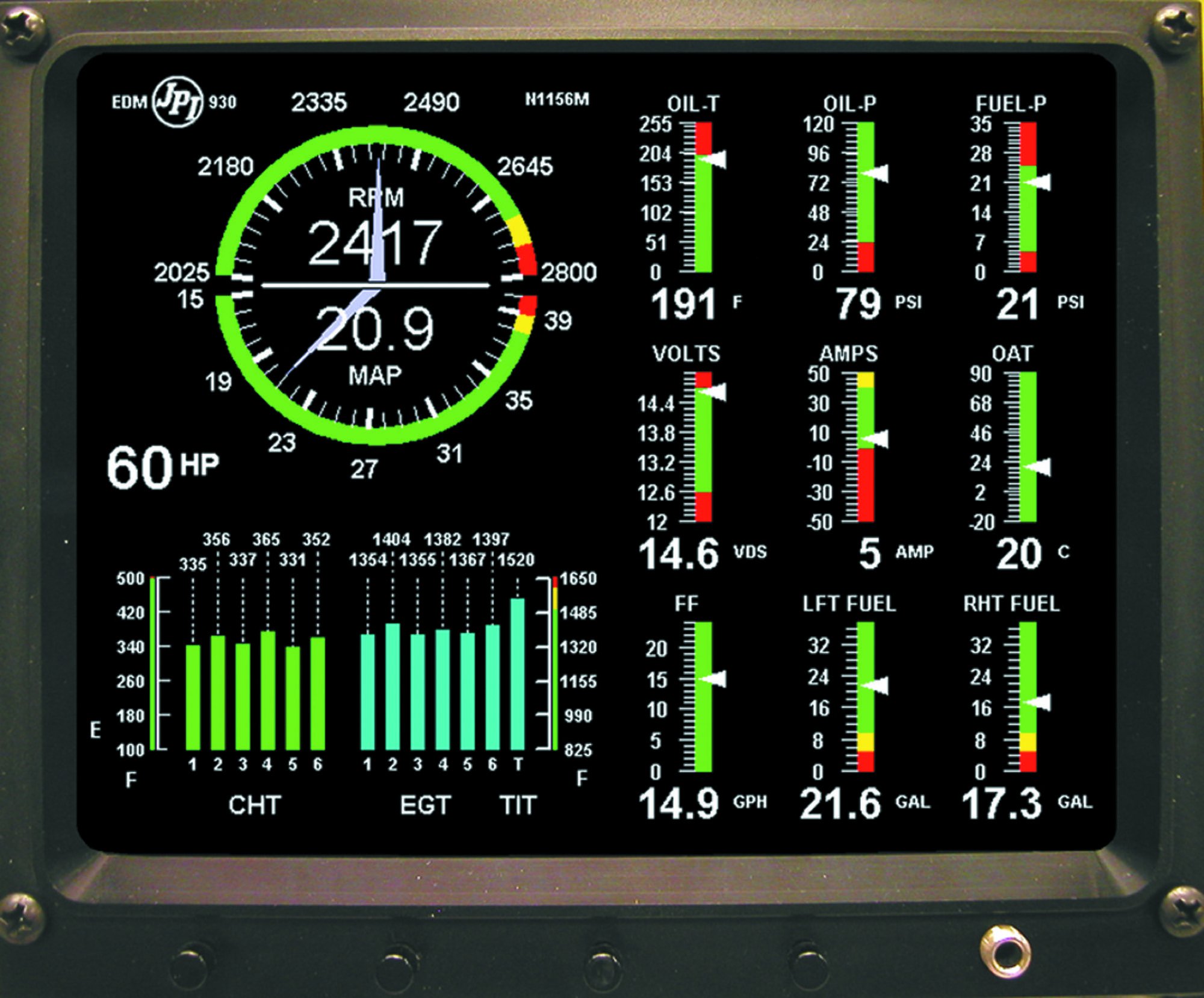
As we’ve reported, the once-popular Xerion Auracle big-screen monitor has been orphaned. This was once a flagship monitor with a good display. The good news for owners left in the cold is that many of the probes and sensors for this system can work with a JP Instruments engine monitor, including the EDM930. It’s one of our top picks for a retrofit big-screen engine display. The Electronics International MVP-50 is another. We’ll hammer out the difference in the upcoming market scan. As for price, realistically you’ll want to budget $10,000 or more for some installations, which makes integrated systems like Garmin’s EIS on the G3X Touch and TXi displays worth considering.
Realistic Expectations
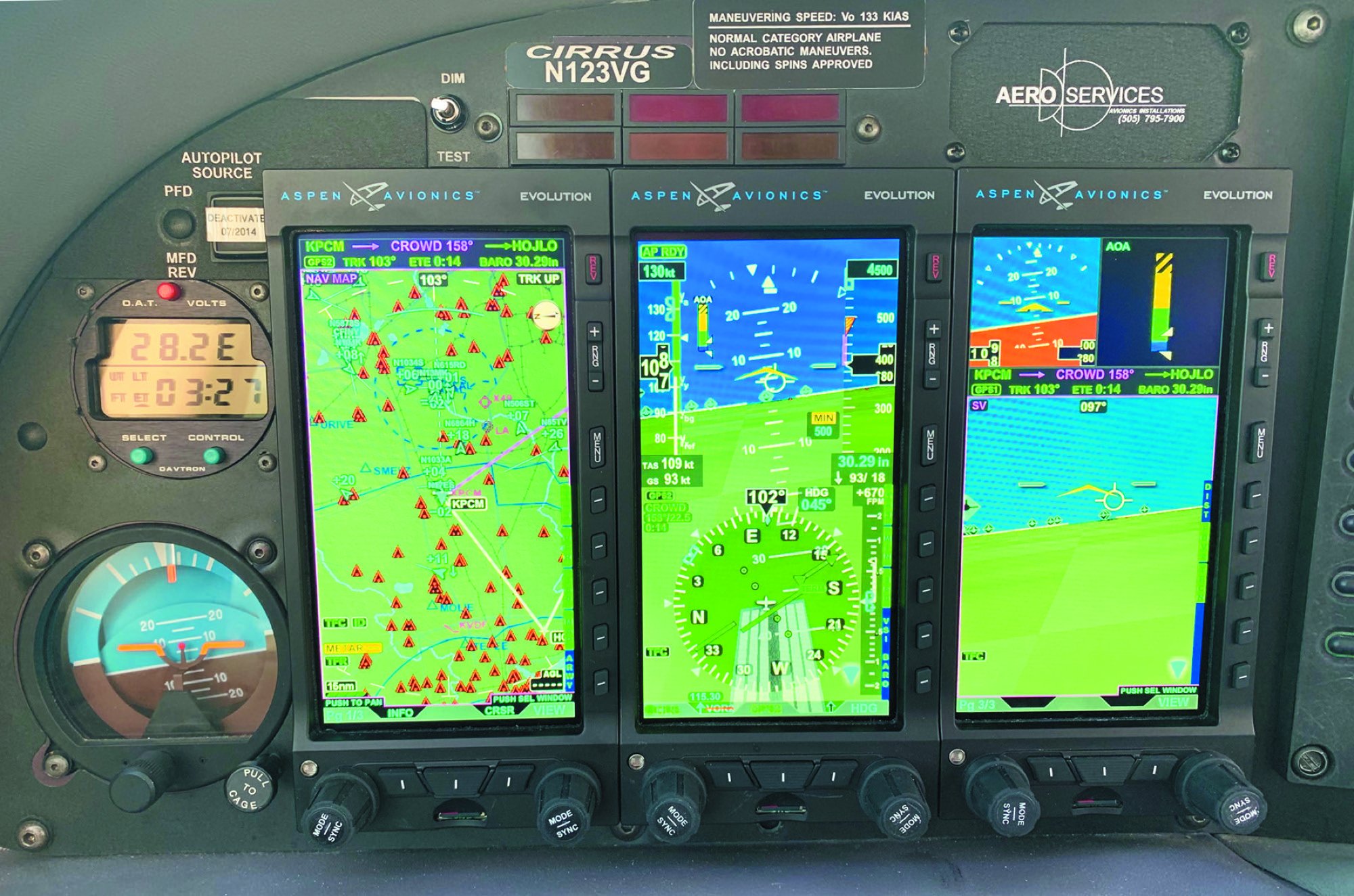
A few words on avionics projects. Before even asking a shop for a price quote, bring them the aircraft. They need to see the wiring and the antennas, and if the upgrade includes an engine display, they’ll want to eyeball the engine bay.
Don’t underestimate the learning curve that tags along with a new suite, especially if it includes a new-to-you GPS navigator. Use the downtime to hit the pilot’s guides. If your instincts are telling you that formal training is in your future, limit your flying to decent weather. Accept that you’ll be a test pilot for a few hours. And an airplane that’s been all over the hangar floor for a month or longer-now with unfamiliar avionics-is a poor match for the nonproficient pilot.
It’s a buyer’s market with lots of choices. Now is a good time to invest, but don’t let lower prices fool you into thinking even a basic upgrade will be inexpensive. Expect overruns and long downtimes.
Shop labor effort and rates are at an all-time high and good shops are busy. Pick one and work to maintain a good relationship. You’ll need them for support, including software and hardware upgrades as the systems mature.
Autopilots 101


0)]

1)]

2)]
If you’re in the market for a new autopilot, there have never been so many choices at the $10,000 price point. Clockwise from the top: The digital Genesys S-TEC 3100 has a growing STC list and is a good value because it work with existing S-TEC autopilot servos, saving a sizable amount of installation time. It’s also intended as an easy replacement for the S-TEC 55-series autopilot with minimal rewiring. That’s the Trio Pro Pilot autopilot, which also has a growing STC list and some smart features as standard. Garmin’s GFC500 started life as an autopilot for experimental aircraft, but now has a sizable STC list for certified aircraft. It’s big on features, small on size and works with the Garmin flight displays. The TruTrak Vizion has a straightforward installation. Ask your shop what models are approved for your aircraft and price them all.
MANDATE-COMPLIANT, panel ads-b products | ||||
product | ADS-B specs | display interfaces | price | comments |
Appareo | ||||
STRATUS ES | 1090ES ads-b transponder | n/a | $2495 | Requires WAAS GPS input (Garmin, Avidyne). |
Stratus ESG | 1090ES ADS-B TRANSPONDER | N/A | $2995 | Has internal WAAS GPS, interfaces with select Stratus portable ADS-B receivers. |
ASPEN AVIONICS | ||||
NGT-9000 | 1090ES ADS-B transponder duAL-band ads-B in | EVOLUTION MFD, some garmin and avidyne displays | $2645 | L3 Avionics product sold by Aspen. $795 software unlock required to interface traffic/weather with Aspen display. |
avidyne | ||||
AXP340 | 1090ES ADS-B TRANPONDER | N/A | $3995 | Partial plug-and-play with some existing BendixKing transponders. AXP322 is remote version. |
AXP322 | 1090ES ADS-B TRANSPONDER | IFD navigators | $3995 | Remote version of the AXP340. Tuned through the IFD-series navigators. |
Skytrax100 | 978 UAT IN | All IFD navigators | $2199 | Display compatibility with several third-party systems for ADS-B In, including Garmin GTX345, L3 Lynx 9000 Series, and FreeFlight RANGR UAT. |
BENDIXKING | ||||
kt74 | 1090ES ADS-B TRANSPONDER | N/A | $2999 | Partial plug-and-play with KT76A/C, KT78A transponders, requires WAAS GPS input. |
KGX130 | 978 UAT IN | iOS TABLET MFD traffic only | $1489 | ADS-B In only, for use with 1090ES transponder. |
KGX150 (G) | 978 UAT out, 978 UAT in | ios tablet mfd traffic only | $4069 | Has internal WAAS GPS. |
KGX150 | 978 UAT OUT, 978 UAT in | ios tablet mfd traffic only | $3489 | Version without internal WAAS GPS. |
freeflight systems | ||||
FDL-978-RX | ADS-B IN | MFD, tablets | $3161 | Works with a Wi-Fi module for display on tablet computers and select panel displays. |
FDL-978-RX/G | ADS-B in | MFD, tablets | $3995 | Same as the FDL-978-RX, but with a built-in GPS. |
FDL-978-XVR | 978 UAT out, 978 UAT in | ios tablet MFD TRAFFIC | $3935 | Single-box solution that works with Garmin GNS430W/530W navigators, works with a Wi-Fi module for connecting to tablets. |
FDL-978-XVR/G | 978 UAT Out, 978 UAT IN | IOS tablet mfd traffic | $4980 | Same as FDL-978-XVR but with internal WAAS GPS. |
FDL-1090-TX | 1090ES ADS-B transponder | N/A | $4495 | Remote control head/processor design, requires WAAS GPS input. |
garmin | ||||
GTX330D w/ES | 1090es ads-b transponder | N/A | $8637 | Diversity Mode S transponder with ADS-B Out when connected with an appropriate WAAS GPS. |
gtx335 | 1090es ads-b transponder | n/a | $2995 | Internal WAAS GPS. |
GTX345 | 1090ES ADS-B transponder | GTN750/650/G1000, G1000TXi, TABLETS, G500TXi, G600TXi | $4995 | Internal WAAS $5795, GTX345-R LRU priced the same and works on G1000 NXi, G2000, G3000, G5000. |
GDL82 | 978 UAT OUT | N/A | $1795 | Designed to work with and connects to the existing Mode A/C transponder. |
GDL84 | 978 UAT out, dual-band in | ios, android tablets | $3995* | Standalone ADS-B Out and In, wireless Bluetooth connectivity with Flight Stream 110/210. Requires Garmin Pilot, ForeFlight tablet app. *$4495 with Flight Stream 210 (built-in AHRS). |
GDL84H | 978 UAT out, dual-band in | ios, android tablets | $3995* | Standalone ADS-B Out and In, wireless Bluetooth connectivity with Flight Stream 110/210. Requires Garmin Pilot, ForeFlight tablet app. *$4495 with Flight Stream 210 (built-in AHRS), version for helicopters. |
GDL88 | 978 UAT OUT, DUAL-BAND IN | GNS530W/430W GTN750/650 G600/500/TXi/G3X *ios/android | $3995 | Requires WAAS GPS input, tablet interface requires Flight Stream wireless Bluetooth module, Garmin Pilot or ForeFlight app. |
GDL88-W | 978 UAT OUT, DUAL-BAND IN | GNS530W/430W GTN750/650 G600/500/TXi/G3X *ios/android | $5143 | Has built-in WAAS GPS receiver, tablet interface requires Flight Stream wireless Bluetooth, Garmin Pilot or ForeFlight app. |
GDL88-D | 978 UAT OUT, DUAL-BAND IN | GNS530W/430W GTN750/650 G600/500/TXi/G3X *ios/android | $4495 | Diversity model (requires top and bottom antenna installation), requires WAAS GPS input, tablet interface requires Flight Stream wireless Bluetooth module, ForeFlight or Garmin Pilot app. |
GDL88-WD | 978 UAT OUT, DUAL-BAND IN | GNS530W/430W GTN750/650 G600/500/TXi/G3X *ios/android | $5643 | Has built-in WAAS GPS receiver, diversity (requires top and bottom antenna installation), tablet interface requires Flight Stream wireless Bluetooth module, ForeFlight or Garmin Pilot app. |
GDL88-DH | 978 UAT OUT, DUAL-BAND IN | GNS530W/430W GTN750/650 G600/500/G3X *ios/android | $5395 | Diversity and the version made for helicopters. |
L3 Aviation LYNX | ||||
NGT-9000D+ | 1090ES ADS-B transponder duAL-band ads-B in | HAS WAAS GPS, touchscreen, displays traffic and weather on some aspen, avidyne and garmin displays | SEE DEALER | Supports diversity (top and bottom antenna), displays TIS-B, FIS-B ATAS (ADS-B Traffic Alerting System), includes Active Traffic (Interrogates Non-ADS-B Aircraft). Option-Terrain Vision $895. Option-TAWS $4000. |
NGT-9000+ | 1090ES ADS-B transponder duAL-band ads-B in | has WAAS GPS, touchscreen, displays traffic and weather on some aspen, avidyne and garmin displays | SEE DEALER | Displays TIS-B, FIS-B ATAS (ADS-B Traffic Alerting System), includes Active Traffic (Interrogates Non-ADS-B Aircraft). Option-Terrain Vision $895. Option- TAWS $4000. |
NGT-9000 | 1090ES ADS-B transponder duAL-band ads-B in | has WAAS GPS, touchscreen, displays traffic and weather on some aspen, avidyne and garmin displays | $5433 | Displays TIS-B, FIS-B ATAS (ADS-B Traffic Alerting System), includes Active Traffic (Interrogates Non-ADS-B Aircraft). Option-Terrain Vision $895. Option-TAWS $4000. |
trig avionics | ||||
TT31 | 1090ES ADS-B transponder | N/A | $2225 | Stack-mounted, requires WAAS GPS input. |
TT22 | 1090ES ADS-B TRANSPONDER | N/A | $1989 | Two-piece system, requires WAAS GPS input, compact. |
UAVIONIX | ||||
skybeacon | 978 UAT OUT ONLY | N/A | $1849 | Wingtip mount with WAAS GPS, LED nav light, LED strobe light. TSO certified, STC for installation pending. |
TAILBEACON | 978 UAT OUT ONLY | N/A | $1999 | Tail mount version. Pending TSO certification. |

